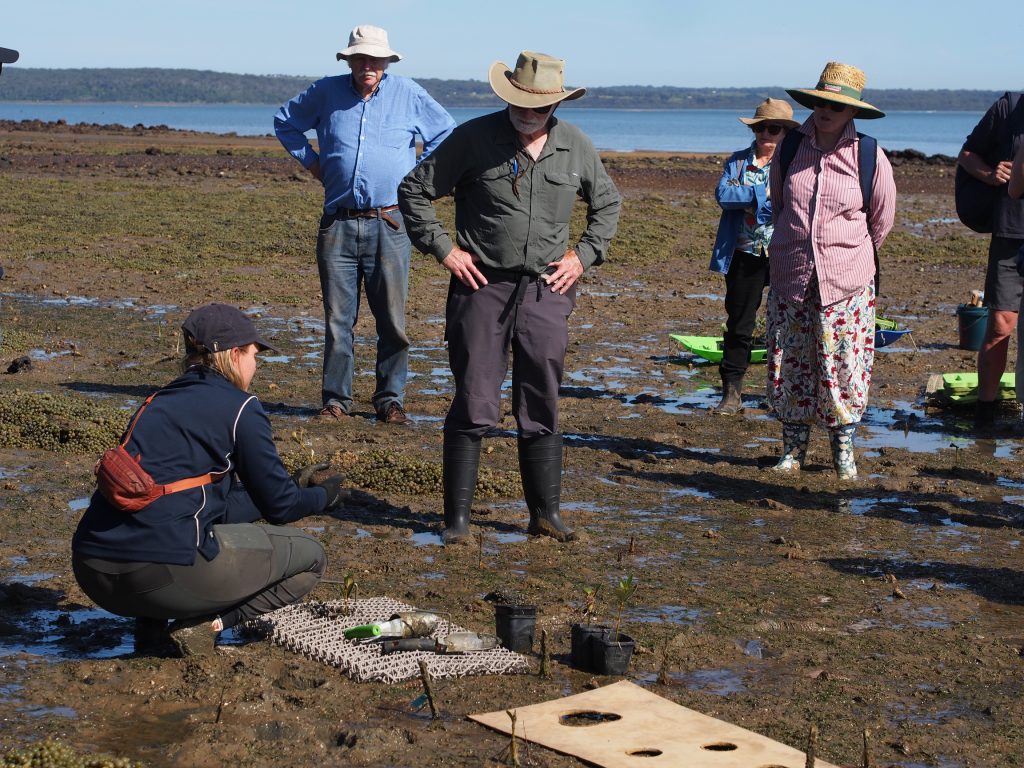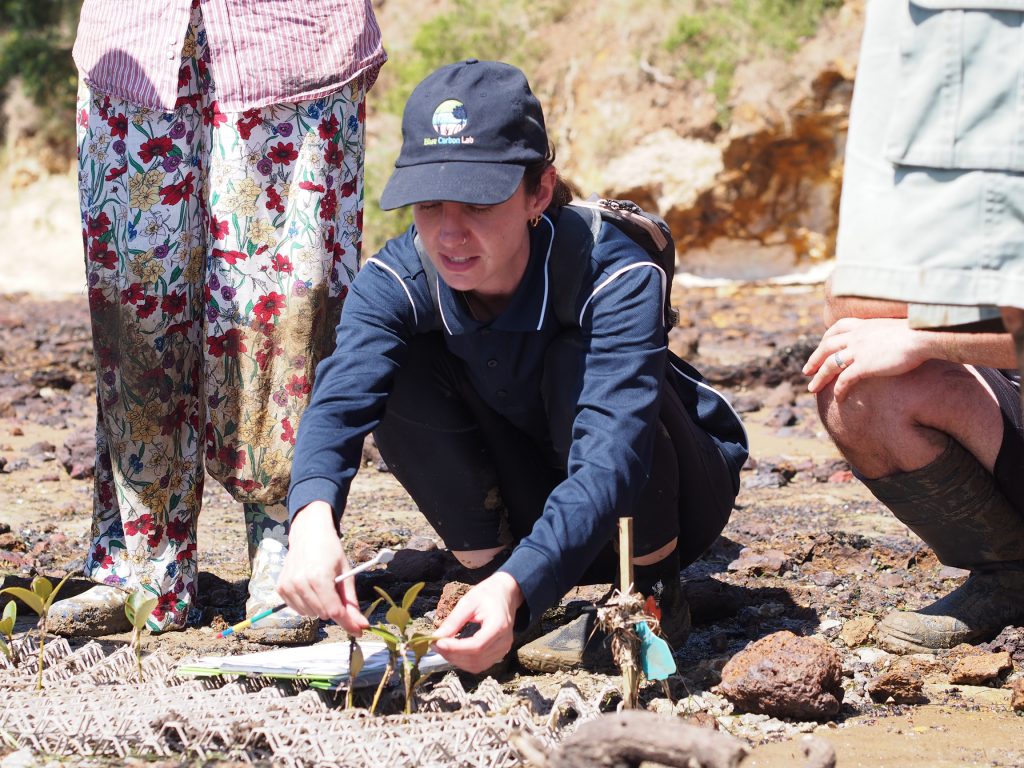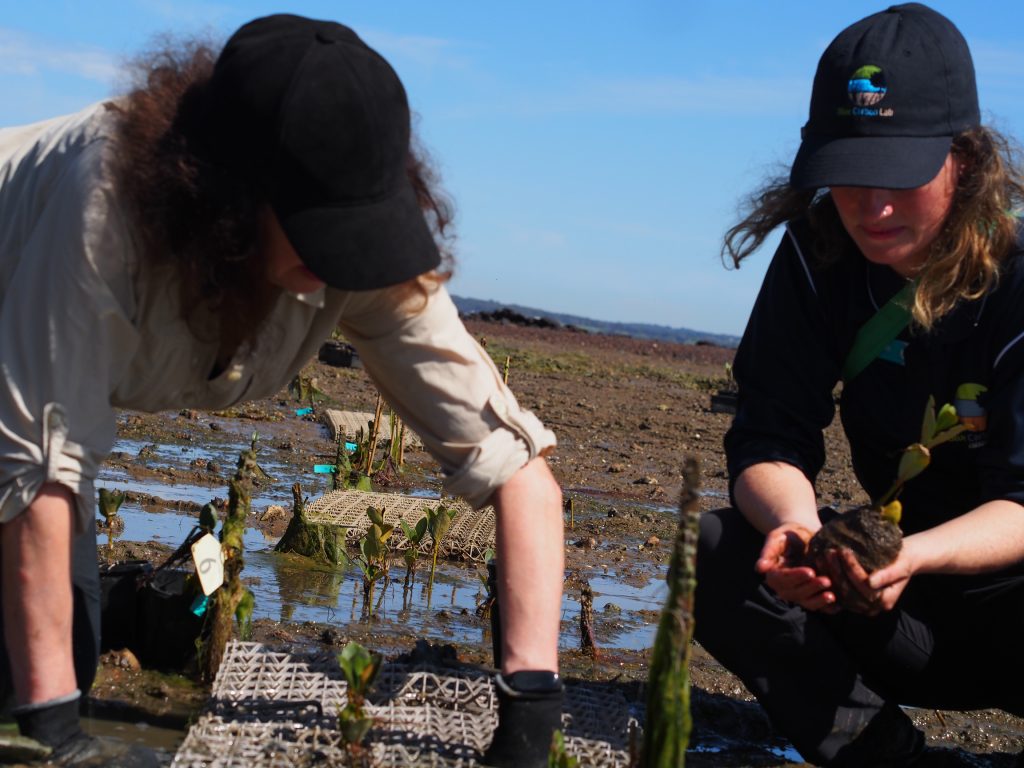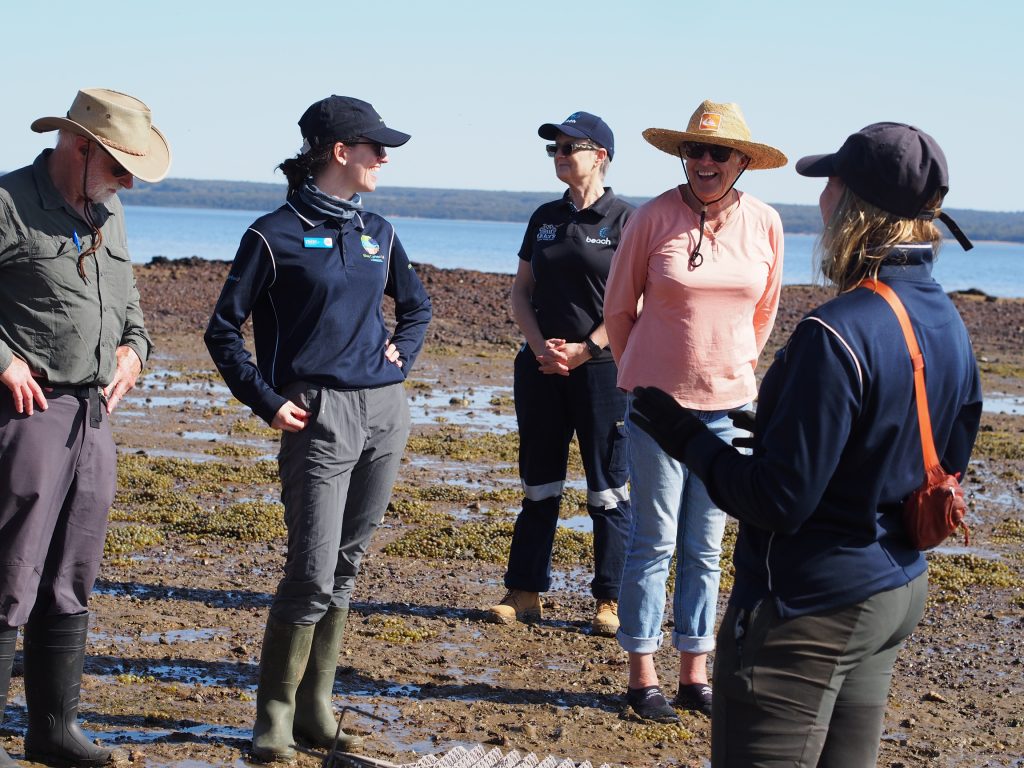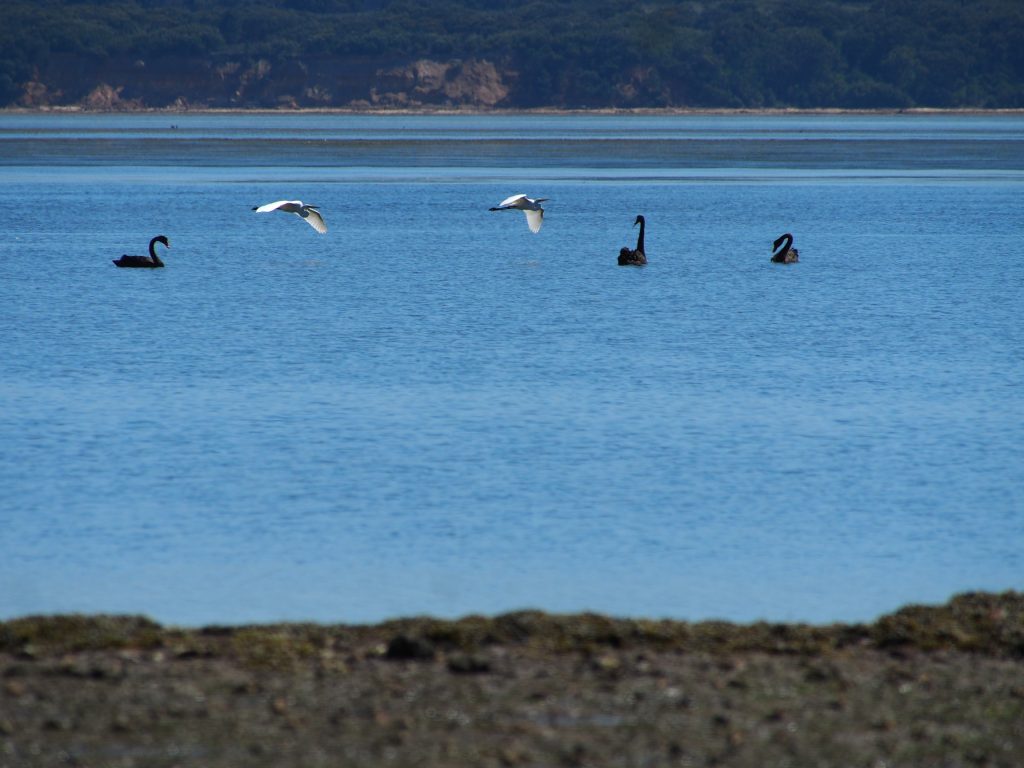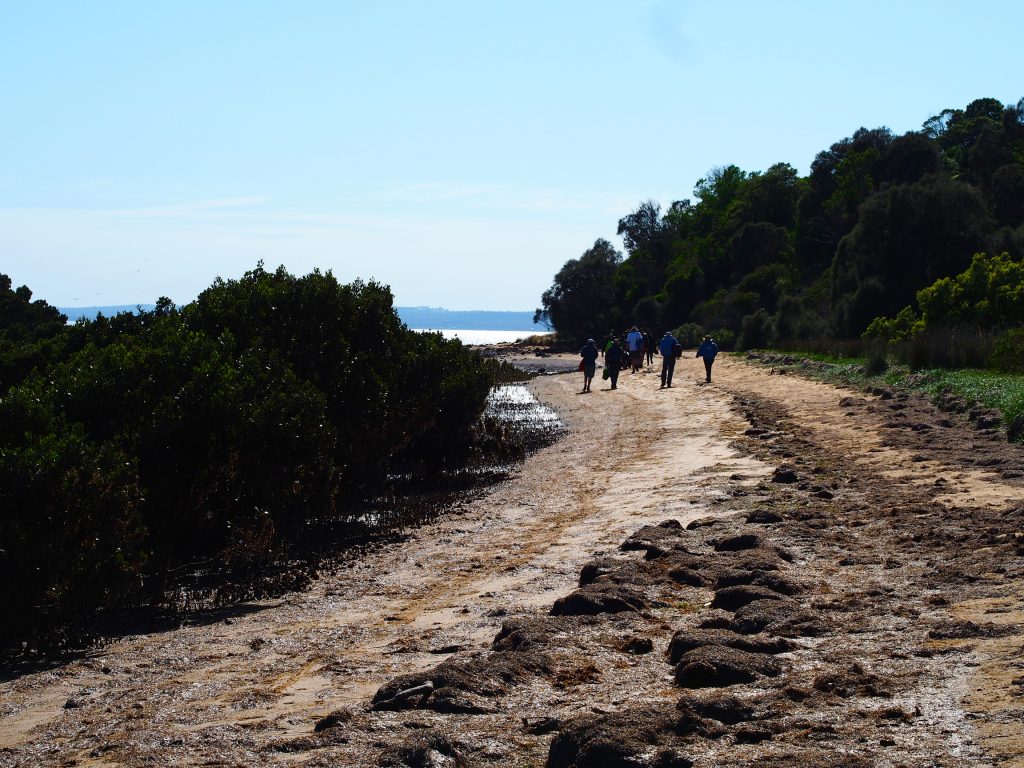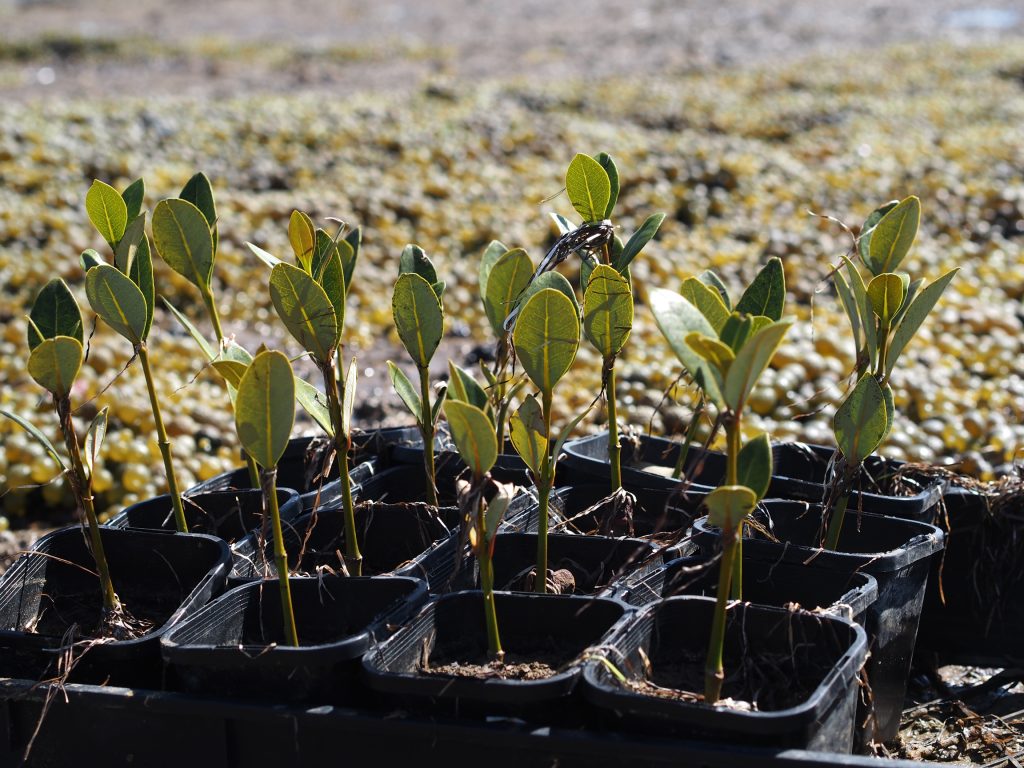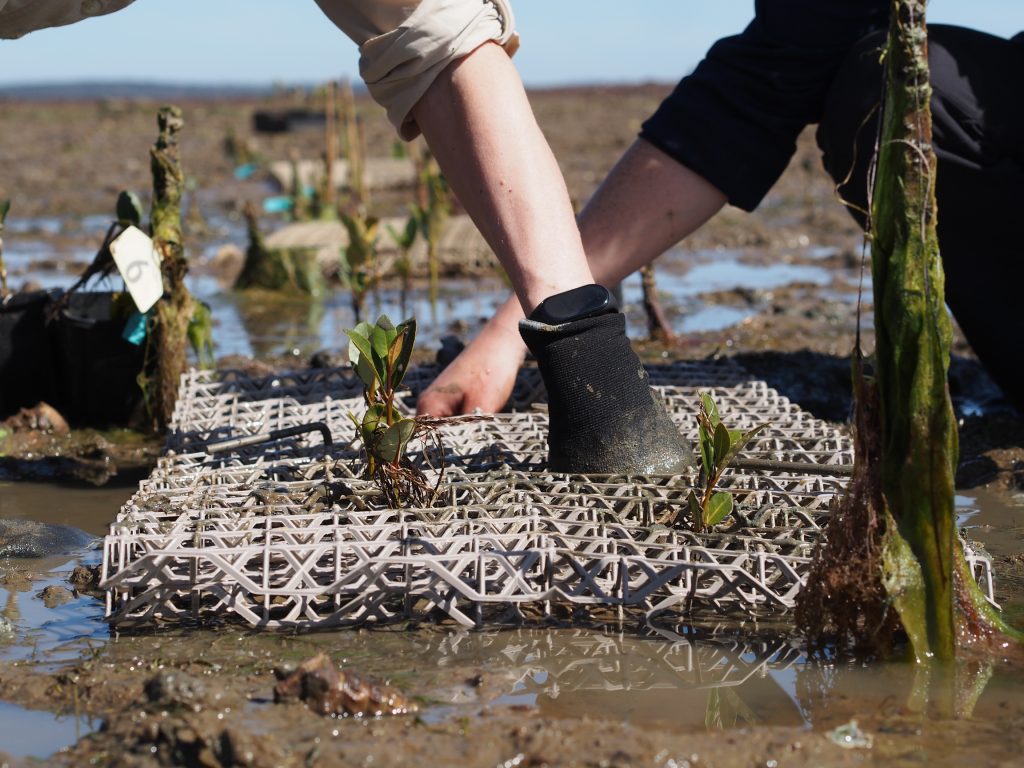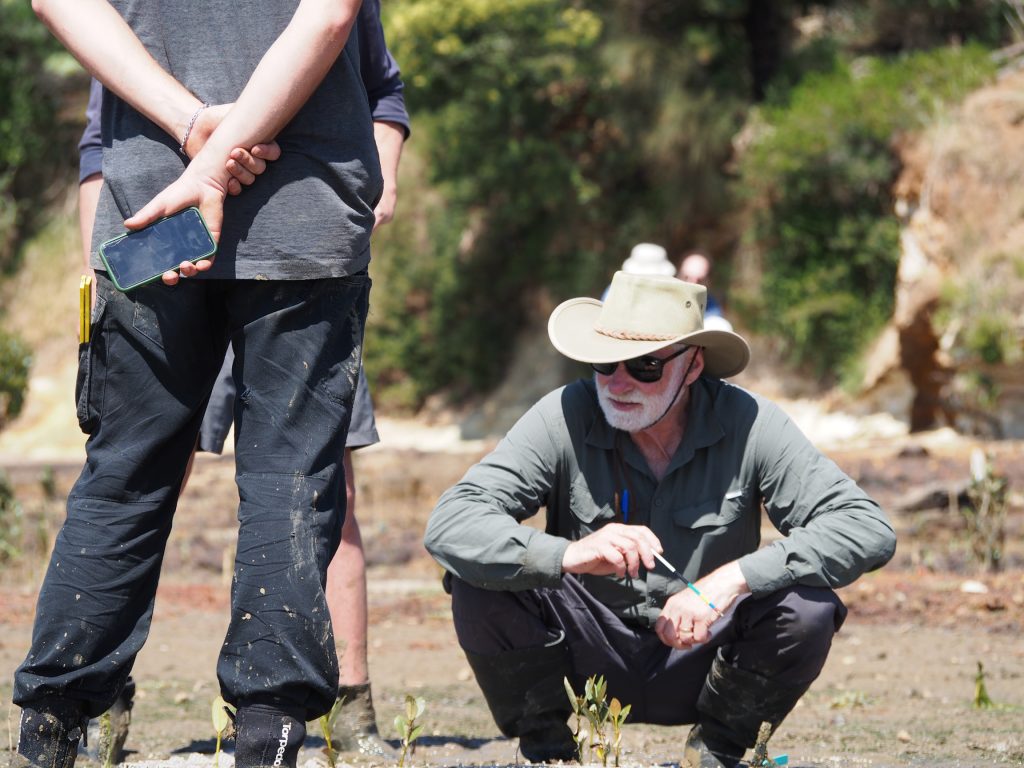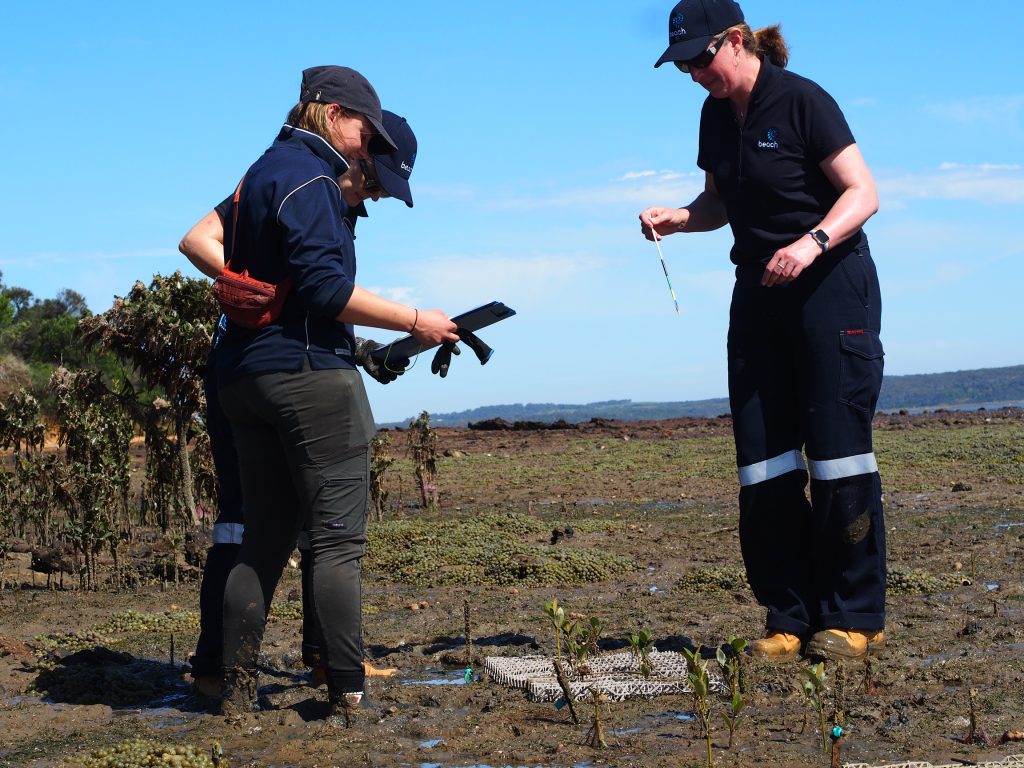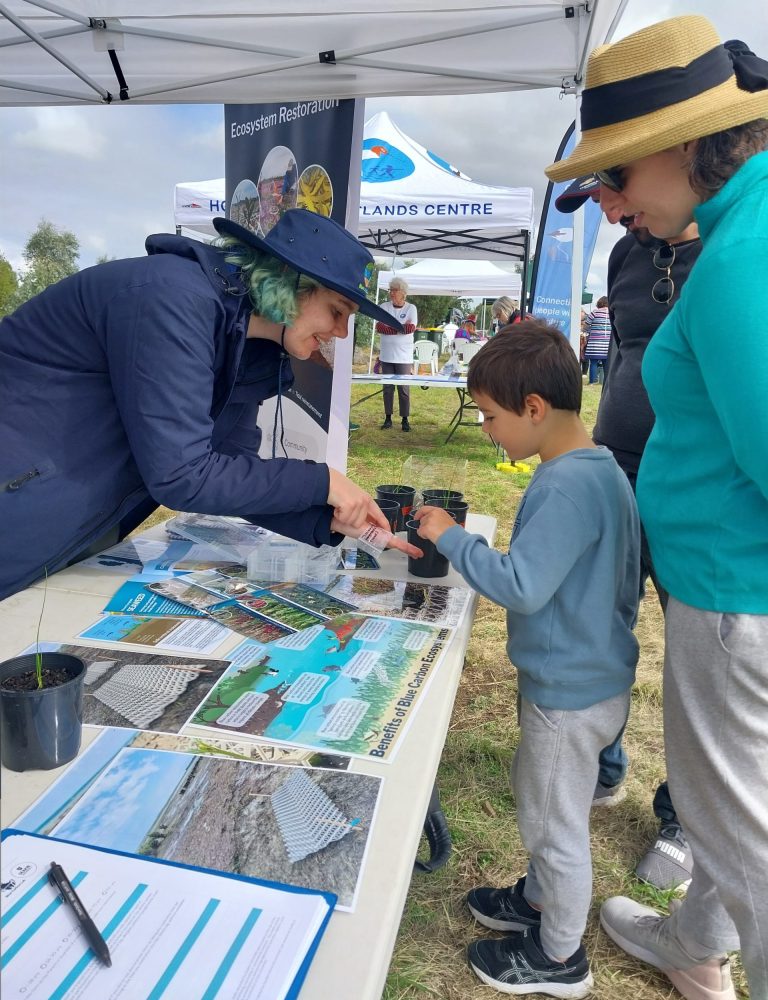In October the #ReGenOurCoasts team held a second citizen science event at our trial restoration site in Corinella, Western Port. This time, we were joined by participants from our partner Beach Energy as well as members of the local community and organisations including the Corinella Foreshore Reserve Committee of Management, Westernport Swamp Landcare, and Western Port Biosphere Foundation.
After morning tea and a briefing at the Corinella and District Community Centre we made our way down to Corinella Foreshore Reserve. On arrival, Josh, an Elder from Bunurong Land Council Aboriginal Corporation, gave us a thoughtful and inspiring Welcome to Country. As we stood on the shore, many of us sinking our toes into the cool sands, it was a time to reflect on why we had all come together. We were surrounded by people who held a special connection to this place, and an incredible passion for protecting and restoring our fragile coast. People who had seen changes to these shores over their lifetimes, and who understood first-hand the many benefits that coastal habitats can provide.
The day’s activities consisted of planting mangrove seedlings, grown from seed under the care of Jamie and the team at Advance Native Nursery for the last 10 months, and recording measurements of their height and leaf pairs. This data will form a baseline so that the research team can monitor their growth and survival. The team is interested to know if raising healthy seedlings in a nursery environment can give them an advantage in the field, where harsh, dynamic conditions can be difficult for young seedlings to overcome.
Of course, another major part of our #ReGenOurCoasts trials involves using biodegradable, 3D-printed lattice structures to stabilise the sediments we’ve planted our seedlings into. It is hoped that these lattices simulate the protection provided by the aerial and underground root systems of mangroves and other coastal wetland plants in areas where historic loss has occurred and natural recruitment has been patchy or slow going.
So, the participants planted seedlings into plots of bare sediment as well as plots that contained biodegradable structures. Planting mangroves is similar to planting any terrestrial plant – though there is a knack to make sure the seedlings are packed firmly into muddy soil without damaging their fragile roots or stems!
All together, participants planted over 160 mangrove seedlings, and now it’s time to sit back and see how they grow over the summer.
One of the best parts of a community event like this isn’t just the massive amount of work that a dedicated group of people can achieve, but also the knowledge exchange, insightful questions and sharing of resources between everyone involved. ReGenOurCoasts is not the only program trialling ways to enhance coastal restoration, and we’re very grateful for the support and information being shared by groups like Western Port Seagrass Partnership and local community members also working in this space.
We’ll be heading across to northern Port Phillip Bay for the next #ReGenOurCoasts citizen science day in early 2024 – watch this space for updates and how to get involved!

JOIN US ON OUR NEXT ADVENTURE!
To find out about upcoming citizen science opportunities, sign up to our newsletter.

